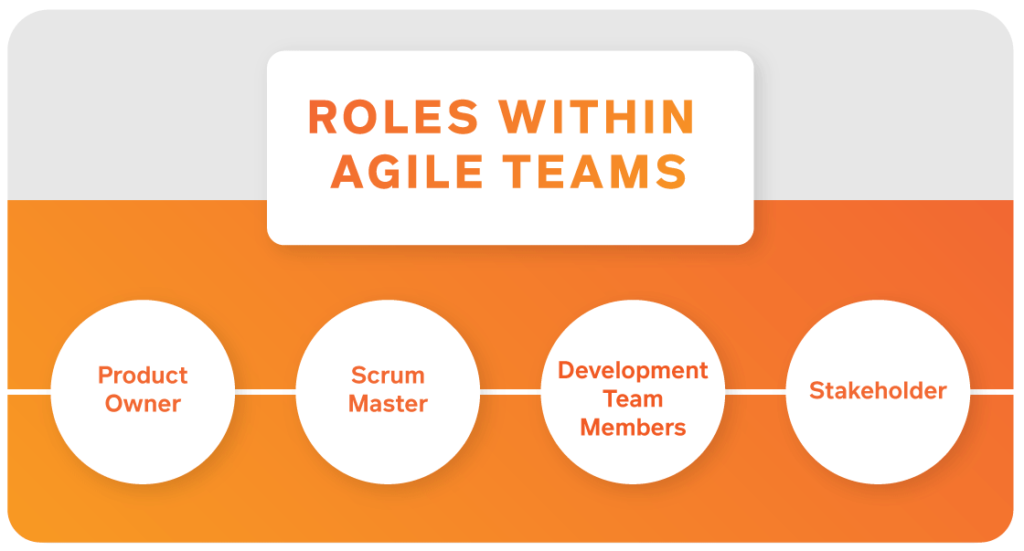COVID-19 has proven that we can get just as much work done remotely as we do in person. Learn more about the ways virtual squads can help your business grow.
We wouldn’t be surprised if you happened to be reading this blog from the comfort of your home office rather than your work office. As coronavirus continues to rage across the world, companies have made a significant effort to adopt remote methods of working, to varying degrees of success. Make no mistake – there is a growing recognition of the transformational benefits that come from working in an agile mindset. However, especially for established companies, moving to an agile operating model is undoubtedly tough.
Agile Organization Transformation
Originally conceived for the world of software development, more and more organizations are adopting agile ways of working. Simply put, agile organizations are different and successful agile transformations all share common elements. While traditional organizations are built around a static, siloed, structural hierarchy, agile organizations are best described as a network of cross functional teams operating in rapid learning and decision-making cycles. Governance bodies are placed at the top of a traditional organization, and decisions that are made flow down the hierarchy. On the opposite end of the spectrum, agile principles introduce a common purpose, using data to give decision rights to the teams closest to the information. By combining adaptability and velocity with efficiency and stability, agile organizations operate in ways that traditional organizations cannot replicate.
Agile Transformation Roadmap
As McKinsey wisely points out, any enterprise-wide agile transformation strategy needs to be both iterative and comprehensive. That is, it should be iterative in that not everything can be planned up front and comprehensive in that it touches strategy, structure, people, process, and technology.
The iterative approach is made up of two components that require organization-wide methods that continuously test, learn, and course correct.
1) Aspire, design, and pilot
To begin an agile transformation, organizations must first build the top team’s aspirations and understanding, create a blueprint to identify how business agility will add value, and learn through agile pilots. Treat these three elements as a living entity that inform one another and sometimes overlap.
a. Top-team aspiration: strong and aligned leadership from the top is needed for a successful agile journey. To build the top team’s understanding and aspiration, visit the sites of companies that have undergone an agile transformation.
b. Blueprint: the blueprint should provide a clear vision and design of how a new operating model might work. By pinpointing value, organizing the structure, identifying agile teams, outlining requirements of agile core processes, people, and technology, and a roadmap that decides on an implementation approach, organizations will have a coherent approach to their transformation.
c. Agile pilots: through individual teams, pilots demonstrate the value of agile ways of working through tangible business outcomes.
2) Scale and improve
In this stage, the leadership team needs to recognize that scale-up will require an iterative mindset as learning is rapidly incorporated in the scale-up plan. This phase involves having the willingness to role model new mindsets and behaviors. Not everything can be known and planned for, and agile transformations acknowledge that ways of working are constantly under review. Continuous refinement is based on constant feedback and capability building for key roles across the organization, including agile coaches, project managers, product owners, scrum masters, and leadership.
The Roles within Agile Teams

Agile squads are made up of defined roles and responsibilities that help them meet their goals efficiently. According to BMC Blogs, the following are the most common positions:
- Product owner: this person has two main responsibilities – understanding the requirements of the project from a stakeholder perspective and communicate the requirements to the product development team, as well as understanding the long-term business vision and aligning the project with the needs and expectations of all stakeholders. The key responsibilities of a Product Owner include scrum backlog management, release management, and stakeholder management.
- Scrum master: this person receives instruction from the product owner and ensures team working coordination, supporting the progress of the project between individual team members. Along with managing external communication with the organization, responsibilities may include implementing changes, coordinating between stakeholders to find necessary resources, and helping product owners optimize the backlog planning for optimum performance.
- Development team members: these individuals have responsibilities including but not limited to product development. The team takes cross-functional responsibilities necessary to transform an idea or a requirement into a tangible product for the end-users. The required skills include a product designer, writer, programmer, tester and UX specialists.
- Stakeholder: this position may not be directly involved in the product development process, but their feedback is valuable. The stakeholder may be the end-user of the product, business executives, production support staff, investors, external auditors or scrum team members from other associated projects and teams.
4 Ways Virtual Squads Cut Costs and Help Your Business Grow
At the end of the day, scaling with a virtual team is easier and more cost effective than growing with in-house employees. According to Forbes, there are four ways that implementing virtual squads can lead to savings, access to better talent, and more:
1. Lower costs and higher productivity: by working with virtual squads, companies stand to save a lot in office-related expenses. However, with virtual teams working out of their home offices, many will funnel energy that otherwise would have been spent in long commutes into increased productivity. By hiring the right people and situating them within virtual squads, businesses will actually get a better yield on time spent.
2. Development teams become leaner and smarter: though working with remote team members can be challenging, they also offer companies a plethora of benefits. Once they have been deployed, businesses can run a more cost-efficient product development team. Further, a well-run international team can accomplish time-sensitive tasks on a 24/7 basis while also bringing new perspectives to the team.
3. Better alignment with employees: in the remote world, companies are being forced to address production over presence as the ultimate indicator of value. Since virtual squads have the capability to work around the clock, businesses are able to bring products to market more quickly. As a result, people are being forced to rethink their traditional compensation plans. The overall financial picture improves as these compensation plans better align employees with the company. Team members are incentivized to the right behaviors, leading to overall benefits of both the company and employees.
4. Access to a larger talent pool: one of the greatest advantages an agile organization enjoys is the fact that the company is able to recruit from a larger talent pool worldwide instead of being limited to the geographic location where offices are located. From an employer’s perspective, by going the contractor route (versus just remote), businesses pay for only the work being done, instead of a full payroll, while allowing flexibility and freedom within the position.
Make Business Gains with Stefanini’s Virtual Squads
We are in the midst of a massive digital shift as businesses incorporate new technologies into their companies. Success depends on if your business can stay at the forefront of transformation, finding solutions and implementing them quickly. That’s where virtual agile squads come in.
Virtual Agile squads promote strategic thinking, problem-solving and design skills; all components of agile transformation success. And not only do they allow teams to work separately, but you can work with the best people from all over the world.



















